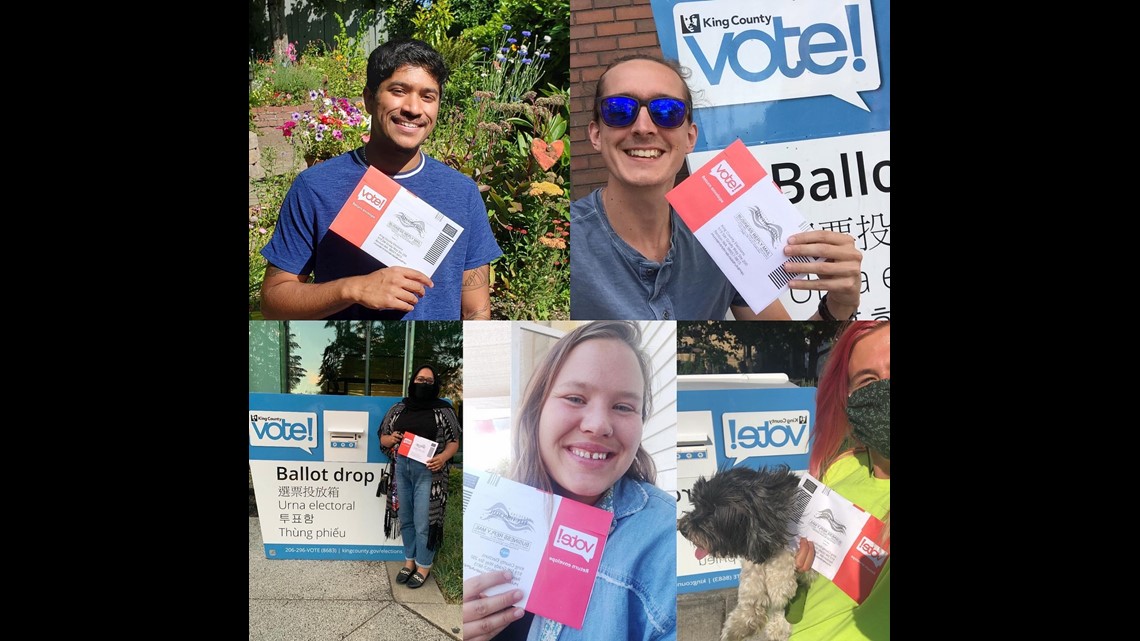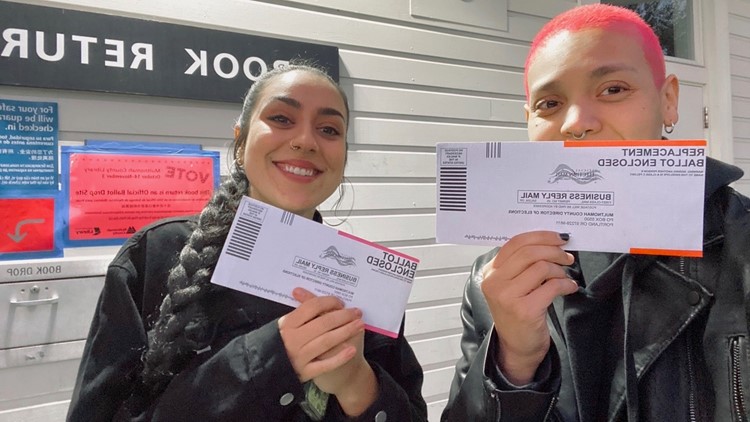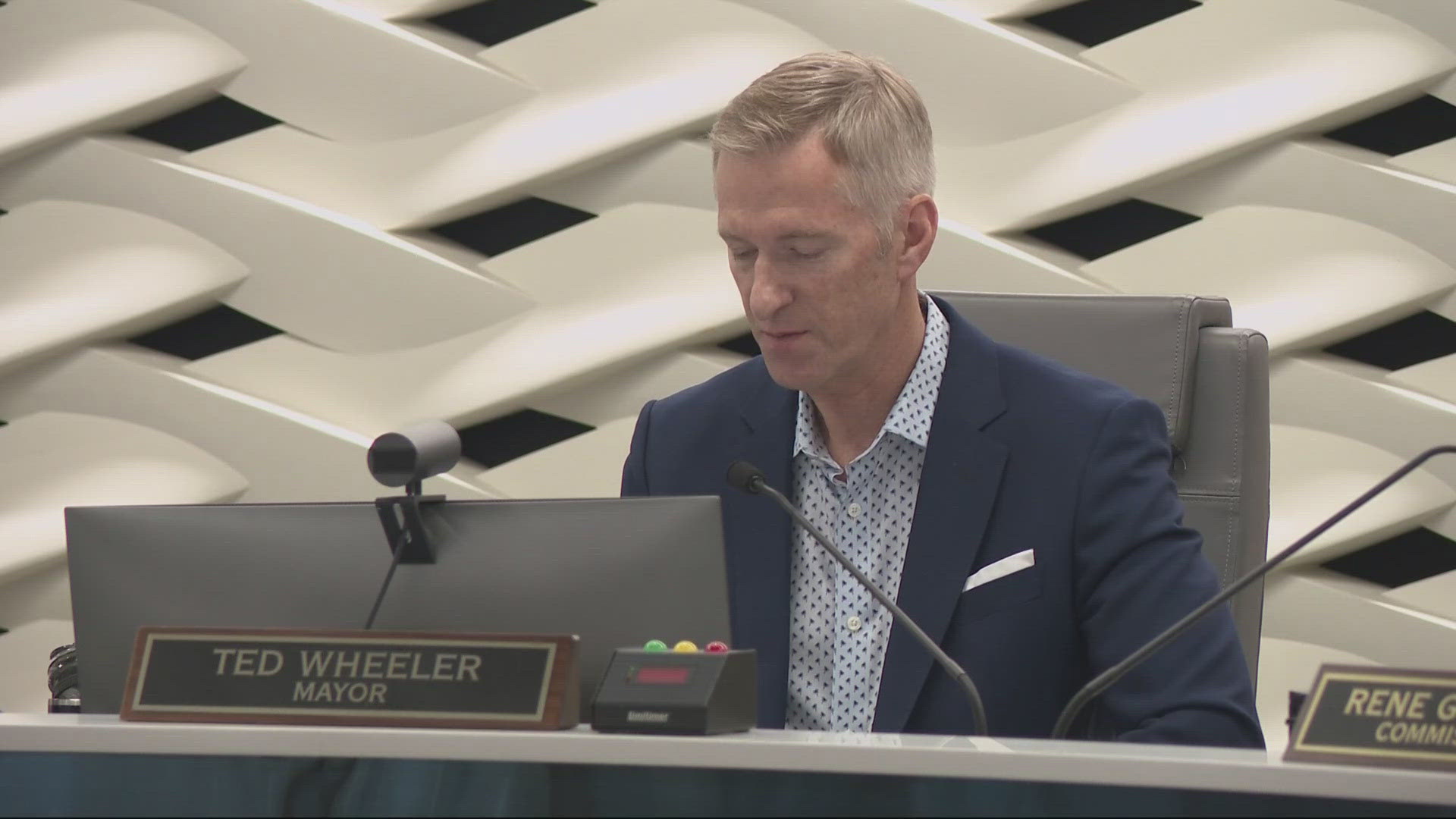PORTLAND, Ore. — Youth voting surged in the 2020 election and may have even helped propel President-elect Joe Biden to victory.
Across the country, current ballot counts show that nearly 10 million voters ages 18-29 cast their ballot in the 2020 presidential election. This accounts for about 51% of voting-eligible young people, according to the Center for Information & Research on Civic Learning and Engagement (CIRCLE).
Youth voter turnout this year surpassed youth turnout in 2016 (about 43%) and youth turnout in 2008 (48.4%) — which was the highest youth turnout since 1984, according to the United States Elections Project.
“I was definitely expecting us to vote our brains out and really show up,” said Samantha Gladu, executive director of Next Up Oregon, an organization that mobilizes youth voters.
Youth voters supported Biden by wide margin
Nationwide, 61% of voters under 30 supported Biden, while 36% supported President Donald Trump.
Support for Biden increased with youth of color. 86% of Black youth, 83% of Asian youth and 74% of Latino youth supported Biden, while only 51% of white youth supported him.
In Oregon, the results were close to the national average.
63% of youth voters cast ballots for Biden, while 31% of these voters cast ballots for Trump. For reference, across all Oregon age groups, 57% of voters went for Biden, while 40.58% went for Trump.
In Washington, youth votes for Biden skyrocketed.
71% of these voters supported Biden, while 25% of them supported Trump. Meanwhile, across all demographics in the state, only 59.41% of voters went for Biden, while 38.13% went for Trump.
Washington had the second-highest percentage of youth voters that voted for Biden, following California and Maryland — which tied for first at 74%.
Danny Villars, the field director of Washington Bus (Next Up Oregon's Washington counterpart), said that this election demonstrated that youth want progressive policies and they want them now.
“I just think young people have had enough, and they want to see fundamental change in policies, whether they be local and statewide or at the federal level,” Villars said.
Youth registration rose in Washington with new voter laws
State-specific youth turnout data has yet to be released, but we do know that, in most states, youth voter registration in 2020 exceeded that of 2016.
In Washington, for voters ages 18-24 (and ages 18-19 specifically) registration rose by 10% compared to 2016.
Villars attributes this increase to Washington’s new voter laws.
“I think the easy answer is that Washington state is putting effort in to make it easier for young voters to participate and make their voices heard,” Villars said.
In 2019, Washington adopted pre-registration for 16- and 17-year-olds, automatic voter registration and same day registration.
Villars said that laws like same day registration make voting more accessible for youth, who move around more than the average adult.
Oregon youth registration increased slightly, larger increases in 2016
Meanwhile, Oregon has had automatic voter registration and pre-registration for 16- and 17-year-olds since early 2016.
According to a study from the Center for American Progress, prior to the 2016 general election, Oregon automatically registered more than 272,000 new voters, 40% of which were age 30 or younger.
Between 2016 and 2020, CIRCLE data shows that registration for ages 18-24 went up by only 4% in Oregon, compared to the 10% seen in Washington.
Villars attributes this to Oregon’s already high registration rates in 2016. Oregon had already passed automatic voter registration laws, while Washington was a few years behind.
“It’s kind of a good problem to have when your state makes it so easy to register people to vote, that there actually aren't that many folks out there for us to register to vote,” he said.


Gladu at Next Up Oregon agrees that it is difficult to increase registration rates in Oregon because they are already so high.
“We're at an interesting point in Oregon where 90.2% of eligible Oregonians are registered to vote which, to me, brings up this visual of kind of looking through the couch cushions and looking really hard to find those remaining voters that are not registered,” Gladu said.
Though Oregon’s registration rates are not perfect. For voters ages 18-19, comparing 2016 with 2020, registration actually fell in 16 states, Oregon included. For this youngest voters, Oregon’s registration decreased by 20% — the third-largest decrease in the country.
CIRCLE largely attributes this nationwide trend to the challenge of reaching and registering new voters during the pandemic.
“We know for a fact that voting is a lot harder for people who are new to the system and don't have the expertise, time, money or flexibility to easily participate,” Gladu said.
Even though Next Up Oregon made over 142,000 calls and sent over 236,000 texts to help young Oregon voters form a plan to vote, Gladu said the pandemic made it difficult to reach new voters.
She also said that few organizations or political parties contribute money and effort towards registering voters in Oregon.
“What we see in Oregon — because we're not on a political map, we don't have a swing Senate race, we're not a swing state for the presidency — is a severe lack of investment in that type of organizing work,” Gladu said.
Most youth voters are concerned about systemic issues
Villars said that issues like climate change, college affordability, systemic racism and police brutality are driving concerns among young communities.
According to CIRCLE analysis of the AP VoteCast by the Associated Press, young voters were more likely than other age groups to cite climate change and racism as the most important issues today.
RELATED: Oregon college students share thoughts on election amid record turnout for young early voters
Gladu said that youth were inspired to vote by the many injustices that they have grown up with.
“I think that the record-shattering youth vote turnout has to do with the fact that, for Generation Z and millennials, coming of age has been defined by mass tragedy, including the 911 attacks, school shootings, attending school and working during a pandemic, economic instability and an uprising against systemic racism,” Gladu said.
Gladu continues, “I think that looking at Oregon and Washington and the country, the story of young people in 2020 isn't just the strong turnout numbers — I think it's everything that's happened before the election to activate young people and everything that's happening after, and it's really clear that young people have a gigantic vision of what it means for this country going forward.”





